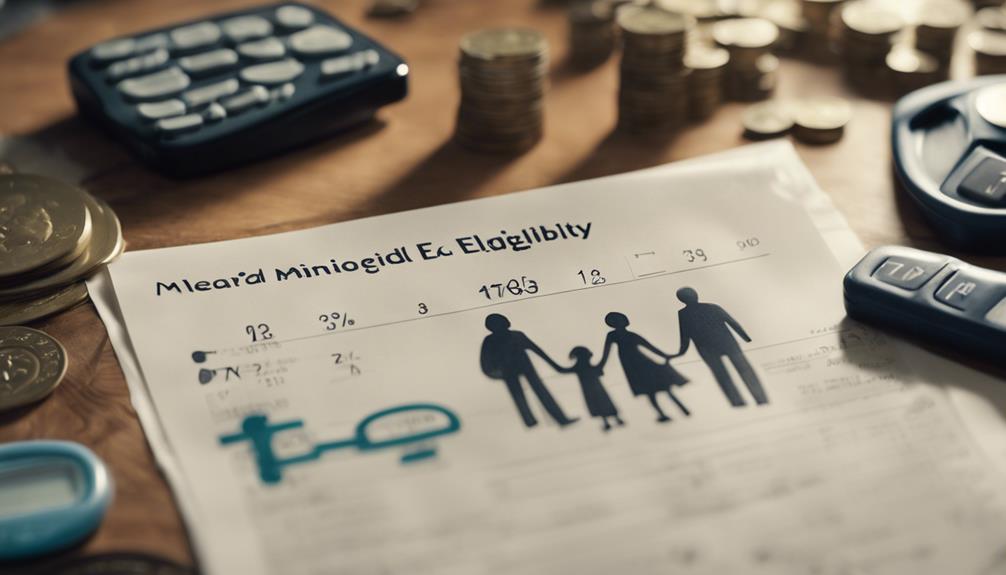
Medicaid serves as a vital safety net for millions of Americans, providing essential healthcare services to those who might otherwise go without. This government-funded program, designed primarily for low-income individuals and families, has evolved into a crucial component of the American healthcare landscape. As we delve into the numbers surrounding Medicaid enrollment, we uncover the impact this program has on the lives of many across the nation. Let’s explore how many Americans are covered by Medicaid and the broad range of services it provides!
Discovering Medicaid: A Lifeline for Millions of Americans!
Medicaid was established in 1965 as a response to the increasing number of uninsured low-income individuals who were unable to afford healthcare. This program stands as a testament to the government’s commitment to ensuring that healthcare is accessible to all, regardless of financial status. With the expansion of Medicaid under the Affordable Care Act (ACA), even more Americans have been able to obtain coverage, bridging significant gaps in healthcare access.
Today, Medicaid is not just a healthcare program; it’s a lifeline for millions, offering everything from routine check-ups to lifesaving emergency services. For many families, Medicaid means peace of mind, knowing that their healthcare needs will be met and that they won’t face financial ruin due to unexpected medical expenses. As we dive deeper into the statistics, it becomes clear that Medicaid’s influence is felt far and wide throughout communities across the United States.
The Growing Numbers: Who’s Enrolled in Medicaid Today?
As of 2023, approximately 87 million Americans are enrolled in Medicaid, reflecting a significant increase in coverage since the program’s inception. This surge in enrollment can be attributed to a variety of factors, including rising healthcare costs, the economic instability brought on by the COVID-19 pandemic, and the ongoing expansion of Medicaid in several states. The program has transformed into a critical resource for vulnerable populations, including children, pregnant women, elderly individuals, and people with disabilities.
The demographics of Medicaid recipients illustrate the program’s broad reach. While it was initially designed to support low-income families, today it also serves a significant number of individuals who are elderly or disabled. This diverse enrollment emphasizes the program’s integral role in the American healthcare system, highlighting the need for continued support and expansion to ensure that all who require care can access it without burdening themselves financially.
Medicaid Madness: A Closer Look at Enrollment Figures!
The enrollment figures for Medicaid can seem overwhelming at first glance, but they tell a powerful story of resilience and support. In the past decade alone, Medicaid enrollment has soared, particularly during the pandemic when many Americans lost their jobs and employer-sponsored health insurance. This unprecedented surge in enrollment highlighted the essential nature of Medicaid as a safety net for those most in need.
What’s particularly fascinating is the variation in enrollment across states. Some states have fully embraced Medicaid expansion under the ACA, leading to higher enrollment rates, while others have opted out, resulting in disparities in access to care. The differences in enrollment figures reflect a patchwork of policies and socioeconomic factors, underscoring the importance of understanding the program’s dynamics to advocate for equitable healthcare access nationwide.
Counting the Blessings: Medicaid’s Reach in the USA!
Medicaid has a profound impact on the lives of countless Americans, particularly among marginalized communities. The program covers nearly 50% of all births in the United States, demonstrating its crucial role in maternal and child health. Additionally, many low-income individuals rely on Medicaid for preventive services, chronic disease management, and mental health care, which are all essential components of a healthy life.
In rural areas, where healthcare providers may be scarce, Medicaid serves as a lifeline, ensuring that residents have access to necessary medical services. By improving health outcomes and reducing financial stress for families, Medicaid helps cultivate healthier communities. The program’s reach extends beyond individual beneficiaries, providing economic stability and supporting local healthcare providers and hospitals, which rely on Medicaid reimbursement to stay afloat.
Medicaid Magic: How Many Americans Are in the Mix?
With nearly 87 million Americans enrolled, Medicaid has become one of the largest health insurance programs in the country. This impressive figure represents nearly 1 in 4 individuals, showcasing the program’s essential role in the American healthcare system. From young children receiving vital vaccinations to the elderly receiving long-term care, Medicaid’s extensive coverage spectrum is truly remarkable.
The sheer number of Americans benefiting from Medicaid illustrates the program’s significance in promoting health equity. As it continues to adapt to meet the needs of an evolving society, Medicaid remains a beacon of hope for those seeking affordable healthcare. Understanding how many individuals are covered by this program emphasizes the collective responsibility we have to support policies that ensure its sustainability and accessibility for generations to come.
The Medicaid Wave: Riding High on Enrollment Success!
The Medicaid wave has brought with it a sense of optimism and community support, as more Americans than ever can access the healthcare services they need. Enrollment growth has surged, exceeding expectations in many states, and demonstrating the program’s relevance in today’s economy. With the continued advocacy for Medicaid expansion, especially in states that have yet to adopt it, the potential for even greater enrollment numbers remains.
As we ride this wave of enrollment success, it’s crucial to celebrate the achievements and recognize the challenges that lie ahead. Ensuring that Medicaid continues to thrive will require ongoing support from both policymakers and the public. The power of collective action can help safeguard this essential program, ensuring that it remains a vibrant part of the American healthcare landscape for years to come.
A Closer Look: Who Benefits from Medicaid Coverage?
Medicaid serves a diverse population, providing coverage to individuals and families from various backgrounds. Children make up a significant portion of Medicaid beneficiaries, receiving essential healthcare services such as vaccinations and routine check-ups. The program also plays a crucial role in supporting individuals with disabilities, ensuring they have access to the specialized care and resources they need to lead fulfilling lives.
Moreover, Medicaid extends its reach to low-income adults, many of whom are working but struggle to afford health insurance. This includes many hard-working individuals in essential jobs who might not earn enough to qualify for private insurance. By offering comprehensive coverage, Medicaid not only improves individual health outcomes but also strengthens families and communities by reducing healthcare disparities and promoting overall well-being.
Medicaid for All: Unpacking the Numbers and Trends!
The conversation around Medicaid is not just about the numbers; it’s about the trends and implications that come with them. As the enrollment figures continue to rise, so do discussions about the future of healthcare in America. Policymakers are increasingly recognizing Medicaid’s critical function in providing affordable healthcare and are looking for ways to enhance and streamline its services.
As we unpack these numbers, it’s essential to consider the potential for future expansions and improvements. With ongoing debates about healthcare reform, Medicaid stands at the forefront of discussions about how to achieve a more equitable health system. The trends we observe today will help shape the direction of healthcare policy for years to come, ensuring that Americans have access to the care they need without financial hardship.
The Heart of Healthcare: Americans and Their Medicaid Plans!
Medicaid is often described as the heart of healthcare for millions of Americans who rely on its services. The program’s comprehensive coverage includes essential health services such as hospital care, laboratory testing, and preventive services, which are vital for maintaining good health. This broad array of services ensures that individuals can receive the care they need, fostering healthier communities overall.
Moreover, Medicaid’s influence extends beyond physical health. The importance of mental health services cannot be overstated, particularly in an era where mental health awareness is on the rise. Medicaid provides critical support for mental health treatment, enabling individuals to access counseling and therapy—an essential aspect of holistic healthcare. As we celebrate Medicaid’s role in the American healthcare landscape, we recognize the importance of continued advocacy for enhanced services and expansions to benefit all who rely on this invaluable program.
Celebrating Medicaid: A Community Resource for Many!
As we reflect on the impact of Medicaid, it’s clear that this program is much more than just a health insurance plan—it’s a community resource that uplifts and supports countless individuals and families. Medicaid fosters a sense of belonging and security for many in our society, providing tools that empower them to lead healthier lives. The program offers a sense of hope, ensuring that everyone has access to the care they require, regardless of their financial situation.
In celebrating Medicaid, we acknowledge the collective effort it takes to ensure this program remains strong. From healthcare professionals to advocates and community organizations, everyone plays a role in promoting awareness and supporting those in need. Together, we can continue to celebrate the success of Medicaid and advocate for its future, ensuring that it remains a vital resource for generations of Americans to come.
In conclusion, Medicaid stands as a testament to the American spirit of support and community. With millions enrolled, this program has transformed the healthcare landscape, providing a safety net for those who require it most. The numbers reveal a hopeful narrative of inclusivity and care, reminding us of the importance of accessible healthcare for all. As we move forward, let us continue celebrating and advocating for Medicaid, ensuring that it remains a cherished resource that uplifts and empowers every American in need!





